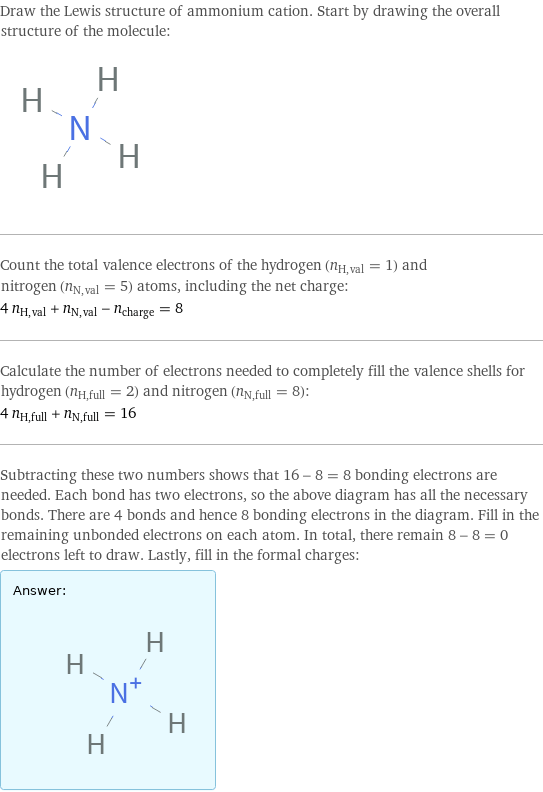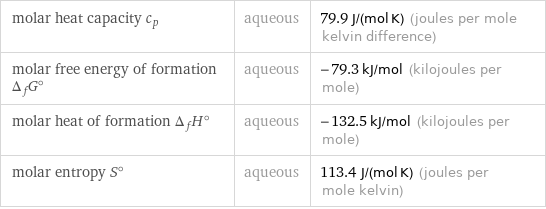Input interpretation

ammonium cation
Lewis structure

Draw the Lewis structure of ammonium cation. Start by drawing the overall structure of the molecule: Count the total valence electrons of the hydrogen (n_H, val = 1) and nitrogen (n_N, val = 5) atoms, including the net charge: 4 n_H, val + n_N, val - n_charge = 8 Calculate the number of electrons needed to completely fill the valence shells for hydrogen (n_H, full = 2) and nitrogen (n_N, full = 8): 4 n_H, full + n_N, full = 16 Subtracting these two numbers shows that 16 - 8 = 8 bonding electrons are needed. Each bond has two electrons, so the above diagram has all the necessary bonds. There are 4 bonds and hence 8 bonding electrons in the diagram. Fill in the remaining unbonded electrons on each atom. In total, there remain 8 - 8 = 0 electrons left to draw. Lastly, fill in the formal charges: Answer: | |
General properties

formula | (NH_4)^+ net ionic charge | +1 alternate names | ammonium | ammonium(1+) | protonated ammonia
Ionic radius

thermochemical radius | 137 pm
Units

Other properties

ion class | biomolecule ions | cations | onium ions | polyatomic ions common sources of ion | isethionic acid ammonium salt (1 eq) | erioglaucine diammonium salt (2 eq) | cupferron (1 eq) | ammonium vanadium(III) sulfate (1 eq) | ammonium trifluoroacetate (1 eq) | ammonium tetraphenylborate (1 eq) | ammonium tetrafluoroborate (1 eq) | ammonium chloropalladite (2 eq)
Thermodynamic properties

molar heat capacity c_p | aqueous | 79.9 J/(mol K) (joules per mole kelvin difference) molar free energy of formation Δ_fG° | aqueous | -79.3 kJ/mol (kilojoules per mole) molar heat of formation Δ_fH° | aqueous | -132.5 kJ/mol (kilojoules per mole) molar entropy S° | aqueous | 113.4 J/(mol K) (joules per mole kelvin)